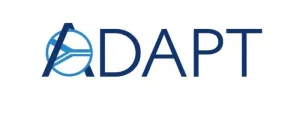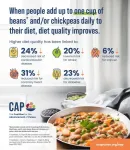(Press-News.org) MSU has a satellite uplink/LTN TV studio and Comrex line for radio interviews upon request.
Images and Podcast
EAST LANSING, Mich. – In recent years, some states have prioritized purging their voter rolls of those who have passed away or moved out of state. During election season, there is often increased discussion about the necessity and impact of these actions. Voter purging can be an important step for creating election integrity, but others have raised concerns about how the process is conducted and who it targets.
So, are there negative effects of voter purging? Researchers from Michigan State University wanted to find out — especially due to the minimal data that exists about who is purged at local and state levels. What their research suggests, published in the journal Social Science Quarterly, is that voter purging in Michigan disproportionately targets underrepresented and lower-income communities. Recently, the Michigan Senate recently passed a bill to expand voter rights and accessibility in the state.
Richard “Dick” SadlerRichard Sadler an associate professor in the departments of Public Health and Family Medicine at the College of Human Medicine, and Thomas “Wally” Wojciechowski is an assistant professor in the School of Criminal Justice at the College of Social Science. Together, they teamed up with community partner Eileen Hayes from Michigan Faith in Action to examine Michigan’s voter purging data and found troubling elements.
“Wally and I are both methodology experts: he knows statistics, I know spatial analysis,” Sadler said. But our disciplinary expertise in criminal justice and public health is also complementary, because the political system is intimately intertwined in both of these areas. Understanding the potential implications of which voters are being purged and where is important because protectors of democracy need to stay ahead of the ball when it comes to voter disenfranchisement, and it’s not always clear which purges are legitimate and which purges target oppressed population subgroups. And so, when my community partner (Eileen) reached out to me to study this issue, I jumped at the chance and knew Wally was the right collaborator for the project.”
Background on voter purging
Voter rights are an essential component to America’s democracy, but there has been a complicated history of disenfranchisement through poll taxes, literacy tests and other barriers to voting access. More modern forms include gerrymandering by cracking voters into districts, expelling members of chambers and now, voter purging when it comes to who it targets.
Voter purging is a practice that removes duplicate voter records, voters who are deceased, voters with felony convictions, or those who have moved to a different jurisdiction, among other reasons.
Key modern examples include Georgia, where 100,000 voters were purged prior to the 2016 presidential primary, which impacted the 2018 gubernatorial race, and North Carolina purged 10% of its total voters after the 2016 election. There have also been cases in Michigan where outside groups tried to purge voter rolls in places like Detroit.
In these cases, the intent or result was that it influenced who participated in the election because many living people were purged erroneously, so the purpose was not just to maintain accurate voter rolls.
Method of data examination
In Michigan, the Bureau of Elections maintains a qualified voter file and voter records are canceled for the reasons noted earlier. Michigan uses the Electronic Registration Information Center, also known as ERIC, to uphold integrity by maintaining roles and notifying voters if they are not registered.
For their study, Sadler and Wojciechowski analyzed the just over 175,000 voters purged from the qualified voter file from Nov. 4, 2014, to Nov. 5, 2018, which equated to 2.5% of the 6.7 million voters in Michigan during that time.
They then brought in data considering four associated factors: total population density, racial composition, socioeconomic status and population residing in urban areas. From this data they established the percentage of voters purged according to their area-based racial community, socioeconomic status and the 2020 election results.
“There are legitimate reasons why voter rolls periodically need to be purged, as people move and die over time and we need to remove them from the voter rolls,” Wojciechowski said. “However, when we included community mortality rates and the rates at which people were moving in and out of communities, communities with a greater proportion of Black residents still experienced increased levels of voter purging.”
Key findings and results
From the analysis, two key findings emerged. First, there was a clear urban-rural divide where cities tended to have higher purge rates than suburban or rural areas. For these cities, there was a strong correlation between the percentage of Black voters and the percentage of individuals voting for the Democratic nominee for president. During this period, there was a Republican legislature majority in Michigan.
Second, a regional pattern was observed where border areas had higher purging rates, namely at the southern part of the lower peninsula and the western part of the upper peninsula of the state.
The characteristics of places where voters were purged included locations where 17% of the population were Black, the average income was just under $50,000, life expectancy was just under 70 years, and the neighborhoods, purged had an average, were made up of 55% Democratic voters.
Since the data was on population, it is only known that they live in neighborhoods with those aggregate characteristics. That said, there were correlations between purges and more Democratic areas, which have more population density, lower life expectancy and more Black residents.
Recommended next steps
Outside the key findings, Sadler and Wojciechowski underscore how a majority party can disproportionately purge voters of the other party by using similar geographic techniques (i.e., focusing on certain parts of the state where they know opposing voters may live), including with higher voter purging rates during election years.
Additionally, there are also public health implications in how health and socioeconomic status can be tied to political power and voter disenfranchisement.
“Support for social programs known to make people healthier and happier and save taxpayer money should not be a political issue. Unfortunately, too much in public health has become politicized, as we saw with COVID-19,” Sadler said. “It matters who we elect to hold office because there is currently an imbalance in the value given to health and economic experts between the two major political parties.”
Importantly, this data only covered one four-year period and the reasons why people moved out of state were not known.
Sadler and Wojciechowski suggest that a review of data purging should be done in all states to determine how the party in power is operating and if discriminatory practices are in place. This would be a good first step, as well as states making sure data is accessible and does not come with costs or additional barriers.
States can also implement new election laws such as early voting periods and same-day registration that encourage people to exercise their franchise to vote, both of which have now gone into effect in Michigan.
Learn more about the structure of Michigan’s election system here.
Read on MSUToday.
END
New MSU research sheds light on impact and bias of voter purging in Michigan
2024-10-03
ELSE PRESS RELEASES FROM THIS DATE:
Funding to create world's first ovarian cancer prevention vaccine
2024-10-03
In this study, the Cancer Research UK-funded scientists will establish the targets for the vaccine. They will find out which proteins on the surface of early-stage ovarian cancer cells are most strongly recognised by the immune system and how effectively the vaccine kills mini-models of ovarian cancer called organoids.
If this research is successful, work will then begin on clinical trials of the vaccine. The hope is that in the future, women could be offered this vaccine to prevent ovarian cancer in the first place.
There are around 7,500 new ovarian ...
Scientists develop novel method for strengthening PVC products
2024-10-03
COLUMBUS, Ohio – Researchers have developed a way to make one type of plastic material more durable and less likely to shed dangerous microplastics.
The study identified a secure way to attach chemical additives to polyvinyl chloride (PVC).
Found in everything from toys, construction supplies and medical packaging, PVC plastics currently rank third among the most used plastics worldwide. Despite its widespread use, pure PVC is brittle and sensitive to heat, and manufacturers can only utilize it after stabilizing its properties with other chemicals.
However, these additives, or plasticizers, ...
Houston Methodist part of national consortium to develop vaccine against herpesviruses
2024-10-03
Houston Methodist researchers will be part of a national consortium funded by an up to $49 million award from the U.S. Government’s Advanced Research Projects Agency for Health (ARPA-H) to develop a vaccine against two of the most common and destructive strains of herpesviruses that latently infect a majority of Americans and can lead to acute infections, multiple forms of cancer, autoimmune disease and birth defects.
The award is part of ARPA-H’s Antigens Predicted for Broad Viral Efficacy through Computational Experimentation (APECx) program and will fund the America’s SHIELD project ...
UT Health San Antonio School of Dentistry earns first NIH grant under new center for pain therapeutics and addiction research
2024-10-03
SAN ANTONIO, Oct. 3, 2024 – The School of Dentistry at The University of Texas Health Science Center at San Antonio (UT Health San Antonio) earned the first National Institutes of Health grant under its new Center for Pain Therapeutics and Addiction Research, addressing pain in patients with head and neck carcinoma.
The nearly $600,000 grant by the NIH’s National Institute of Dental and Craniofacial Research will address this critical pain issue that significantly impairs quality of life. Many head and neck carcinoma patients require opiate pain management, but tolerance develops quickly, requiring new pain ...
Do MPH programs prepare graduates for employment in today's market? Mostly yes, but who is hiring may be surprising
2024-10-03
Public health degree programs provide key competencies demanded by employers, but graduate employability could be improved by using more real-time data from employer job postings, according to a new study at Columbia University Mailman School of Public Health. This could help public health schools and programs ensure that graduates obtain specific technical skills listed in job postings, meet current employer needs, and prepare graduates for the demands of today’s labor market. The findings are published in the American Journal of Public Health.
The competencies required for the ...
New article provides orientation to using implementation science in policing
2024-10-03
Since the 2020 murder by Minneapolis police of George Floyd brought nationwide calls for change amid concerns that prevailing practices were not grounded in evidence and created harm, policing has been in turmoil. Implementation science (IS) involves integrating effective and evidence-based innovations into routine practice in fields like health care. Yet despite its potential, IS—and specifically, evidence-based policing (EBP)—remain vastly understudied and unused in police settings. In a new article, researchers provide an orientation to these issues ...
Three beer-related discoveries to celebrate Oktoberfest
2024-10-03
Frothy or smooth, bitter or sweet, light or dark: There’s a beer for most palates. As people around the world pour over the best brews at Oktoberfest celebrations or ferment about their favorite fall-themed beers, three papers published in ACS journals crack open new insights into these beverages. And if you’re hop-ing to conduct studies to find which beer is good for what ales you, please drink responsibly. Reporters can request free access to these papers by emailing newsroom@acs.org.
Coriander’s origin changes beer flavor. Just like simmering a stew, brewing a beer with herbs and spices can enhance its flavor. A study in ACS Food Science ...
AAAS launches user research project to inform the new AAAS.org
2024-10-03
Washington, D.C. — The American Association for the Advancement of Science, one of the world’s largest general scientific societies and publisher of the Science family of journals, announces an external research project to help the organization reimagine AAAS.org as part of a website overhaul project, which recently kicked off. AAAS is seeking input from its key audiences, including reporters and public information officers, to better align the experience and content of the website. As AAAS embarks on the next ...
In odd galaxy, NASA's Webb finds potential missing link to first stars
2024-10-03
Looking deep into the early universe with NASA’s James Webb Space Telescope, astronomers have found something unprecedented: a galaxy with an odd light signature, which they attribute to its gas outshining its stars. Found approximately one billion years after the big bang, galaxy GS-NDG-9422 (9422) may be a missing-link phase of galactic evolution between the universe’s first stars and familiar, well-established galaxies.
“My first thought in looking at the galaxy’s spectrum was, ‘that’s weird,’ which is ...
Adding beans and pulses can lead to improved shortfall nutrient intakes and a higher diet quality in American adults
2024-10-03
Moscow, Idaho, October 3, 2024: New research showing the association between greater bean and pulse consumption and improved shortfall nutrient intakes and a higher diet quality in American adults will be presented during the Academy of Nutrition and Dietetics (the Academy) Food & Nutrition Conference & Expo (FNCE) 2024 in Minneapolis, MN. The poster session is scheduled for Tuesday, October 8, 2024, from 10:45 – 11:45 AM CT at the Minneapolis Convention Center.
Researchers assessed the effect of increased bean and pulse consumption, in the typical US dietary pattern, on shortfall ...



